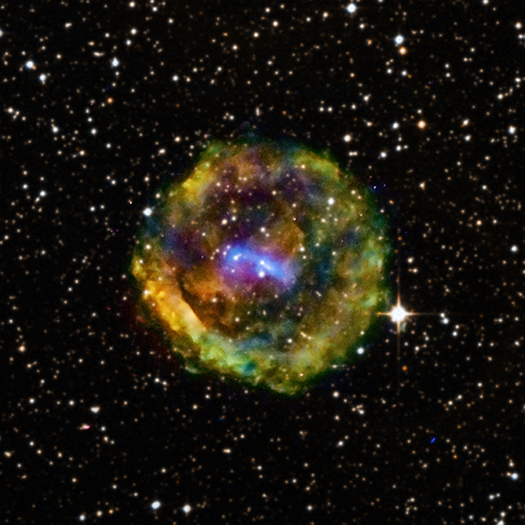Supernova Ejected from the Pages of History
A new look at the debris from an exploded star in our galaxy has astronomers re-examining when the supernova actually happened. Recent observations of the supernova remnant called G11.2-0.3 with NASA's Chandra X-ray Observatory have stripped away its connection to an event recorded by the Chinese in 386 CE.
Historical supernovas and their remnants can be tied to both current astronomical observations as well as historical records of the event. Since it can be difficult to determine from present observations of their remnant exactly when a supernova occurred, historical supernovas provide important information on stellar timelines. Stellar debris can tell us a great deal about the nature of the exploded star, but the interpretation is much more straightforward given a known age.
New Chandra data on G11.2-0.3 show that dense clouds of gas lie along the line of sight from the supernova remnant to Earth. Infrared observations with the Palomar 5-meter Hale Telescope had previously indicated that parts of the remnant were heavily obscured by dust. This means that the supernova responsible for this object would simply have appeared too faint to be seen with the naked eye in 386 CE. This leaves the nature of the observed 386 CE event a mystery.
A new image of G11.2-0.3 is being released in conjunction with this week's workshop titled "Chandra Science for the Next Decade" being held in Cambridge, Massachusetts. While the workshop will focus on the innovative and exciting science Chandra can do in the next ten years, G11.2-0.3 is an example of how this "Great Observatory" helps us better understand the complex history of the Universe and the objects within it.
Taking advantage of Chandra's successful operations since its launch into space in 1999, astronomers were able to compare observations of G11.2-0.3 from 2000 to those taken in 2003 and more recently in 2013. This long baseline allowed scientists to measure how fast the remnant is expanding. Using this data to extrapolate backwards, they determined that the star that created G11.2-0.3 exploded between 1,400 and 2,400 years ago as seen from Earth.
More information at https://chandra.si.edu/photo/2016/g11/index.html
-Megan Watzke, CXC

